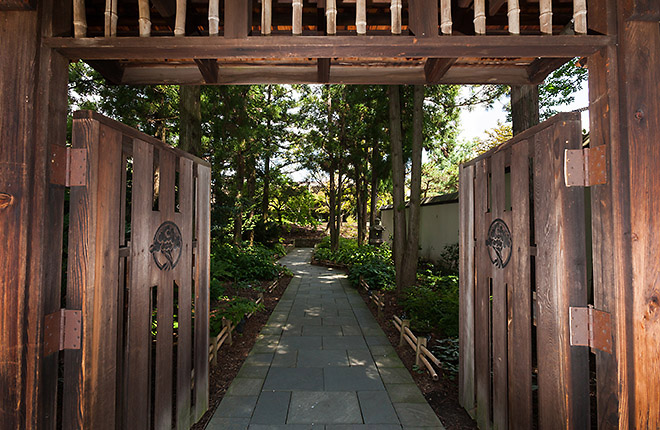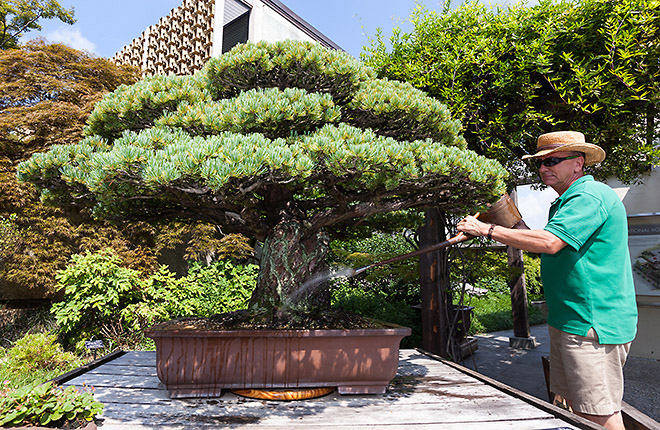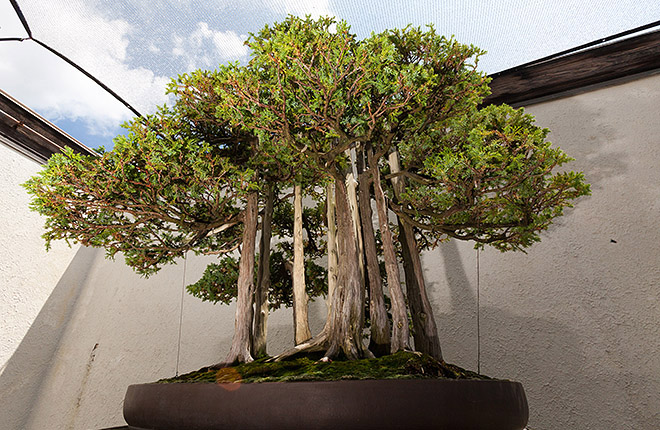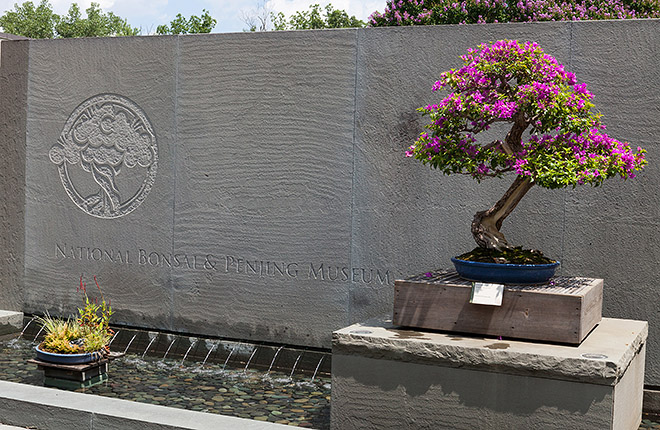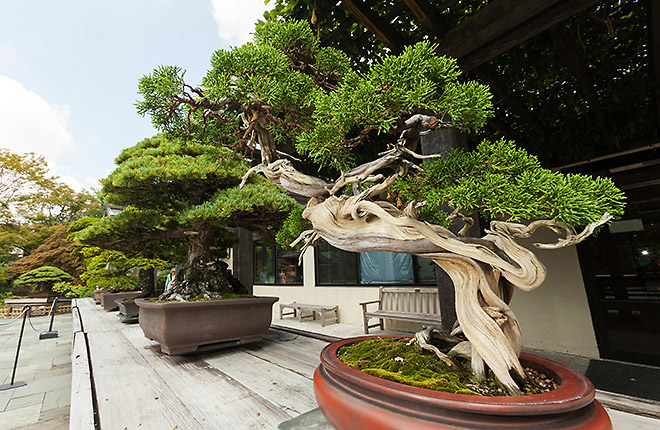National Bonsai & Penjing Museum’s Anniversary
This year marks the 40th anniversary of the U.S. National Arboretum's National Bonsai & Penjing Museum in the nation's capital. The museum began in 1976 when Japan donated 53 bonsai and 6 viewing stones to the people of the United States to commemorate the U.S. Bicentennial.
|
|
The terms "bonsai" and "penjing"—Japanese and Chinese, respectively, for "pot-cultivated"—refer to the art of designing and maintaining miniature living trees or shrubs, long considered the ultimate in gardening skill.
Japanese bonsai, and its precursor, Chinese penjing, are steeped in ancient Asian traditions. Branch placement, styling, and even the pot used-these elements all work in harmony to convey deep symbolism and reverence for nature.
The National Bonsai and Penjing Museum has one of the largest collections of these masterpieces in North America. According to museum curator Jack Sustic, "The collection continues to grow steadily with the addition of pieces from around the world. Today, 3 pavilions house about 150 plants."
The Exhibits Gallery is a focal point that celebrates the related art forms of "viewing stones," or stone appreciation, and "ikebana," Japanese flower arranging.
The Special Exhibits Wing features the work of local bonsai enthusiasts and pieces from the permanent collection with seasonal interest.
A historically significant point in U.S.-Japanese relations is commemorated by a special bonsai in the collection: a 390-year-old specimen from Japan that survived the atomic bombing of Hiroshima. "The tree, donated by bonsai master Masaru Yamaki, was part of the 53-specimen gift to the United States for its 1976 Bicentennial," says Sustic.
The collection also features the most famous bonsai in the world, Goshin, created by John Naka, a Japanese-American bonsai master. Meaning "protector of the spirit," Goshin is a "forest planting" of 11 junipers, representing Naka's 11 grandchildren at the time the bonsai was created.
|
|
According to Sustic, bonsai did not become popular in the United States until after World War II. "Many American soldiers stationed in Japan saw bonsai and brought that interest back home with them."
The National Arboretum also has a North American bonsai collection, and one of the specimens is a bald cypress bonsai created by Vaughn Banting of Louisiana. Native to North America, the bald cypress develops a flat top as it ages.
Changes to the exhibit are under way during the museum's 40th anniversary year. According to Scott Aker, research leader of the National Arboretum's Gardens Unit, "The main difference will be in the way we display the bonsai. Generally, they are displayed on wooden tables or benches. Our new displays place them on granite boulders and carved granite plinths that are topped with hardwood."
The ground will also be different. "Where we once had gravel, we now have a mosaic of low groundcovers and an automated misting system at ground level, which will help to counter the extra heat buildup from the boulders. This is a beautiful and functional new way to display bonsai."
Bonsai is not only an art form but also a philosophy, according to Sustic. "Bonsai allows us to connect with nature at a very intimate level. It teaches us respect for nature, and it teaches us patience, and because of that, it makes us better people. Bonsai is popular because it has such a positive impact on both the viewer and the artist." "Bonsai allows us to connect with nature at a very intimate level. It teaches us respect for nature, and it teaches us patience, and because of that, it makes us better people. Bonsai is popular because it has such a positive impact on both the viewer and the artist."—By Sharon Durham, ARS Office of Communications.
“National Bonsai & Penjing Museum’s Anniversary” was published in the October 2016 issue of AgResearch Magazine.
Key Facts
- The National Bonsai & Penjing Museum opened in 1976.
- The museum started with 53 bonsai and 6 viewing stones donated by Japan.
- The collection includes a 390-year-old bonsai from Hiroshima that survived the 1945 atomic bombing.
- The collection features "Goshin," the world's most famous bonsai.
Full Story








